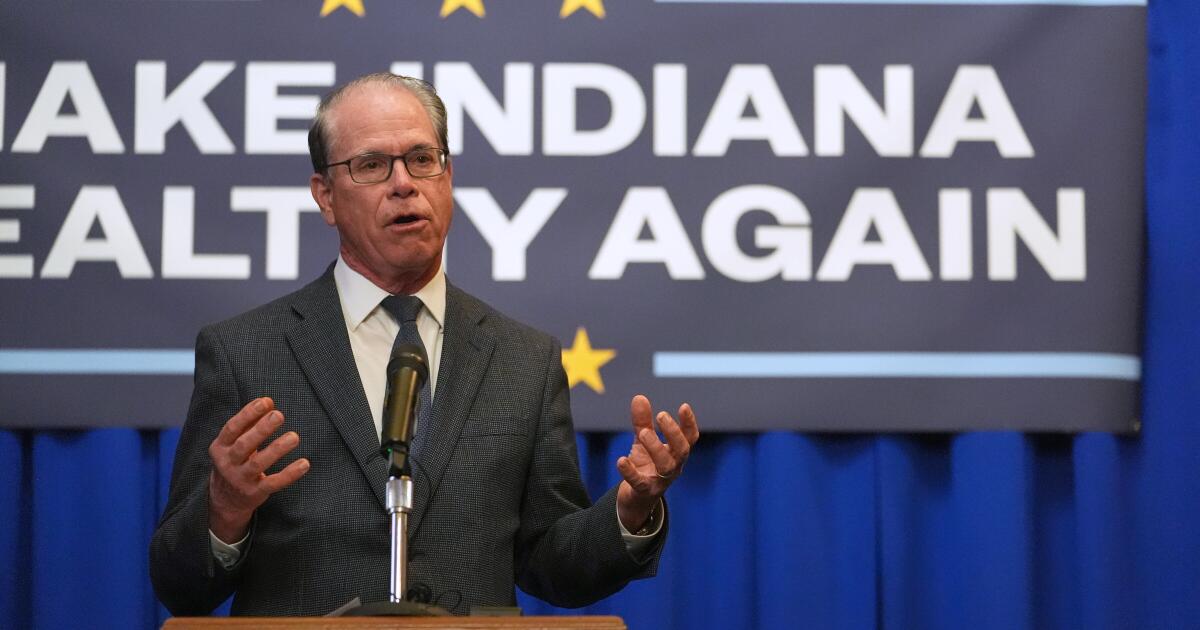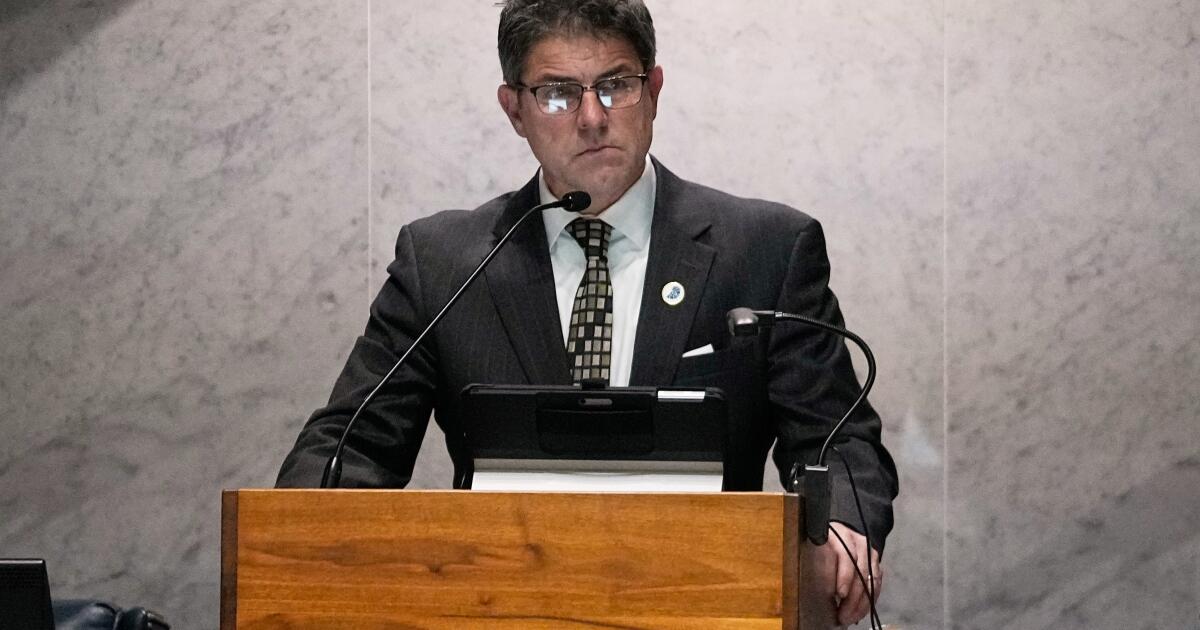Indiana Gov. Mike Braun calls a special session to redraw the state’s congressional boundaries
Indiana Republican Gov. Mike Braun called Monday for state lawmakers to return to Indianapolis for a special session to redraw the state’s congressional boundaries, escalating a national fight over midcycle redistricting.
President Trump has ramped up pressure on Republican governors to draw new maps that give the party an easier path to maintain control of the House in the midterms. While Republicans in Texas, Missouri and North Carolina have moved quickly to enact new districts and California Democrats are seeking to counter with their own redistricting plan, Indiana lawmakers have been far more hesitant.
Braun called for the General Assembly to convene Nov. 3 for the special session. It’s unclear whether enough of the GOP majority Senate will back new maps.
The White House held multiple meetings with Indiana lawmakers who have held out for months. The legislative leaders kept their cards close as speculation swirled over whether the state known for its more measured approach to Republican politics would answer the redistricting call.
National pressure campaign
Vice President JD Vance first met with Braun and legislative leaders in Indianapolis in August and Trump met privately with state House Speaker Todd Huston and state Senate President Pro Tem Rodric Bray in the Oval Office weeks later. Vance also spoke to state lawmakers visiting Washington that day.
Vance returned to Indianapolis on Oct. 10 to meet with the governor, as well as the Republican state House and Senate members.
Braun is a staunch ally of Trump in a state the president won by 19 percentage points in 2024. But Indiana lawmakers have avoided the national spotlight in recent years — especially after a 2022 special session that yielded a strict abortion ban. Braun previously said he did not want to call a special session until he was sure lawmakers would back a new map.
“I am calling a special legislative session to protect Hoosiers from efforts in other states that seek to diminish their voice in Washington and ensure their representation in Congress is fair,” Braun said in a statement Monday.
Typically, states redraw boundaries of congressional districts every 10 years after the census has concluded. Opponents are expected to challenge any new maps in court.
State lawmakers have the sole power to draw maps in Indiana, where Republicans hold a supermajority in both chambers. Democrats could not stop a special session by refusing to attend, as their peers in Texas briefly did.
Republican opposition to redrawing the maps again
A spokesperson for Bray said last week that the Indiana Senate lacked the votes to pass a new congressional map and she said Monday that the votes are still lacking, casting doubt on whether a special session will achieve Braun’s goals.
With only 10 Democrats in the 50-member Senate, that means more than a dozen of the 40 Republicans oppose the idea. Some state Republican lawmakers have warned that midcycle redistricting can be costly and could backfire politically.
Republicans who vote against redistricting could be forced out of office if their colleagues back primary opponents as punishment for not toeing the party line. Braun’s move to call a special session could force lawmakers who haven’t commented publicly to take a stance.
Indiana’s Republican legislative leaders praised existing boundaries after adopting them four years ago.
“I believe these maps reflect feedback from the public and will serve Hoosiers well for the next decade,” Bray said at the time.
Indiana Senate Democratic Leader Shelli Yoder decried the special session and threatened legal action over any maps passed by the Legislature.
“This is not democracy,” she said in a statement. “This is desperation.”
Redistricting balloons
Democrats only need to gain three seats to flip control of the U.S. House, and redistricting fights have erupted in multiple states.
Some Democratic states have moved to counter Republican gains with new legislative maps. The latest, Virginia, is expected to take up the issue in a special session starting this week.
Republicans outnumber Democrats in Indiana’s congressional delegation 7 to 2, limiting possibilities of squeezing out another seat. But many in the party see it as a chance for the GOP to represent all nine seats.
The GOP would likely target Indiana’s 1st Congressional District, a longtime Democratic stronghold that encompasses Gary and other cities near Chicago in the state’s northwest corner. The seat held by third-term Democratic U.S. Rep. Frank Mrvan has been seen by Republicans as a possible pickup in recent elections.
Lawmakers in Indiana redrew the borders of the district to be slightly more favorable toward Republicans in the 2022 election, but did not entirely split it up. The new maps were not challenged in court after they were approved in 2021, not even by Democrats and allies who had opposed the changes boosting GOP standing in the suburbs north of Indianapolis.
Mrvan still won reelection in 2022 and easily retained his seat in 2024.
Republicans could also zero in on Indiana’s 7th Congressional District, composed entirely of Marion County and the Democratic stronghold of Indianapolis. But that option would be more controversial, potentially slicing up the state’s largest city and diluting Black voters’ influence.
Volmert writes for the Associated Press.

